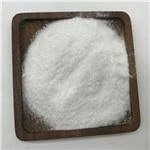Understanding Active Ingredients A Deep Dive into Their Importance in Pharmaceuticals and Consumer Products
Active ingredients play a crucial role in pharmaceuticals, cosmetics, and various consumer products. Defined as the components in a product that provide the desired therapeutic effect or functionality, these ingredients form the backbone of many formulations, ensuring that products are effective and meet regulatory standards. In this article, we will explore the significance of active ingredients, how they are identified and tested, and their implications in health and safety.
What Are Active Ingredients?
Active ingredients are specific substances responsible for producing the intended effect of a product. In pharmaceuticals, these are the chemicals that treat diseases or alleviate symptoms, while in cosmetics, they could be compounds that moisturize, exfoliate, or protect the skin. Understanding these components is essential for both manufacturers and consumers, as they determine the efficacy and safety of the products used.
The Role of Active Ingredients in Pharmaceuticals
In the pharmaceutical industry, the role of active ingredients is paramount. The effectiveness of a drug is directly tied to its active ingredient. For instance, in a pain reliever like ibuprofen, ibuprofen itself is the active ingredient that works by reducing inflammation and pain. Regulators, such as the FDA in the United States, require extensive testing of these ingredients to ensure they are safe and effective before they can be marketed. This involves preclinical studies, clinical trials, and post-market surveillance to monitor their performance in real-world settings.
Identifying and Testing Active Ingredients
The identification of active ingredients begins with extensive research. Scientists may isolate compounds from natural sources or develop synthetic alternatives. Once a potential active ingredient is identified, a series of tests are conducted to evaluate its pharmacokinetics, pharmacodynamics, and toxicity. These studies help determine how the ingredient behaves in the body, the dosage required for efficacy, and any potential side effects.
In the case of consumer products, the process may involve different parameters. For example, cosmetic companies need to ensure that their active ingredients are safe for topical application and do not cause adverse reactions. Testing often includes patch tests, efficacy studies, and consumer trials to gather data on the ingredient's performance.
active ingredient api

Regulations and Safety
Regulatory bodies play an essential role in the oversight of active ingredients. These organizations set guidelines for the safe use of active ingredients in products. In pharmaceuticals, a drug cannot be approved for market use until its active ingredient has undergone rigorous testing and has demonstrated safety and efficacy.
For cosmetic products, while the regulations are less stringent than for pharmaceuticals, manufacturers are still obligated to ensure their products are safe. Active ingredients must be clearly labeled, allowing consumers to make informed choices. This transparency is essential in today's marketplace, where consumers are increasingly aware of what they're putting on their bodies.
The Future of Active Ingredients
The landscape of active ingredients is constantly evolving, driven by advancements in science and technology. For instance, the rise of personalized medicine is prompting pharmaceutical companies to explore more targeted therapies that focus on specific active ingredients tailored to individual patient needs. In cosmetics, there is a growing interest in biocompatible ingredients derived from natural sources, as consumers seek greener, sustainable options.
Moreover, the emergence of novel ingredients such as peptides, hyaluronic acid, and retinoids is changing the ways products are formulated. These advanced compounds often boast enhanced efficacy and fewer side effects, catering to the growing demand for high-performance products in both the pharmaceutical and cosmetic industries.
Conclusion
In conclusion, active ingredients are foundational elements in the development of effective pharmaceuticals and consumer products. Their identification, testing, and regulation are critical to ensuring safety and efficacy, ultimately impacting consumer health and well-being. As we move forward, the ongoing research and innovation in this field will likely yield exciting discoveries, providing consumers with even more effective and safe options in their health and beauty regimens. Understanding active ingredients is vital for consumers and manufacturers alike, promoting informed choices that lead to better health outcomes.

